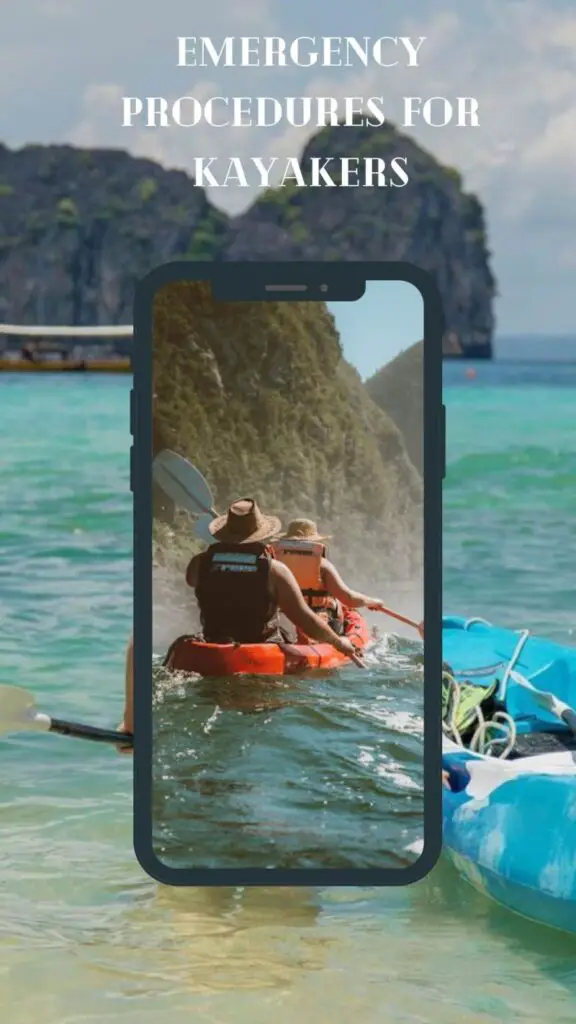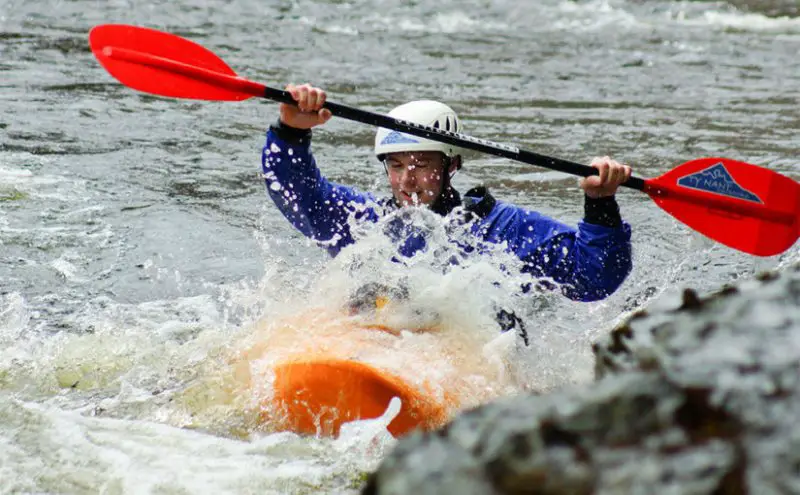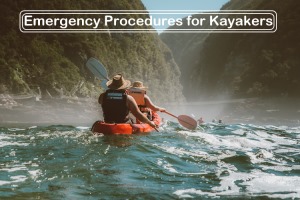Kayaking is a thrilling and adventurous activity that allows individuals to explore waterways and immerse themselves in nature. While it offers a great sense of freedom, it’s crucial for kayakers to be prepared for unexpected situations and emergencies that may arise during their trips. In this article, we will discuss essential emergency procedures for kayakers, equipping you with the knowledge to handle challenging situations effectively and ensure your safety on the water.

Table of Contents
The Importance of Emergency Procedures
When engaging in any water-based activity, it’s vital to prioritize safety. Emergency procedures serve as a foundation for minimizing risks and addressing unforeseen circumstances effectively. For kayakers, being well-versed in emergency protocols can mean the difference between a smooth adventure and a potentially life-threatening situation.
Preparing for a Kayaking Adventure
Before embarking on a kayaking trip, thorough preparation is essential. This includes researching the waterway, planning your route, checking local regulations, and informing someone about your itinerary. Adequate physical fitness, proper gear, and knowledge of basic paddling techniques are crucial prerequisites.
Understanding Water Conditions and Weather
Being aware of water conditions and weather patterns is vital for kayakers. Stay updated on current forecasts, wind speed, and tides. Strong currents, changing weather, and unpredictable waves can significantly impact your safety on the water. Knowing how to interpret these conditions will help you make informed decisions.
Essential Safety Equipment for Kayakers

Equipping yourself with the right safety gear is non-negotiable. Every kayaker should wear a well-fitted personal flotation device (PFD) at all times. Additionally, carry a whistle, a signaling mirror, a throw bag, a marine-grade first aid kit, and a waterproof VHF radio. These items will assist you in various emergency situations.
Self-Rescue Techniques
Kayakers should familiarize themselves with self-rescue techniques to regain control and safety in case of a capsize or falling overboard. Techniques such as the “wet exit” and “T-rescue” are valuable skills to master. Practice these maneuvers in a controlled environment before attempting them in real emergencies.
Assisting Others in Distress
As a responsible kayaker, it’s essential to be prepared to assist others in distress. Learn techniques like towing and rescuing a paddler from the water. Effective communication and maintaining calmness are vital when rendering aid to someone in need.
Dealing with Capsizing and Tipping Over
Capsizing or tipping over is a common occurrence in kayaking. Knowing how to handle these situations promptly and efficiently can prevent panic and ensure a safe recovery. Learn techniques like the “Eskimo roll” or the “paddle float rescue” to regain stability and continue your journey.
Handling Hypothermia and Cold Water Immersion
Kayakers often face the risk of hypothermia, especially in colder climates. Recognizing the symptoms and knowing how to prevent and treat hypothermia is crucial. Dress appropriately in layered clothing, use drysuits or wetsuits, and understand methods for rewarming yourself or others affected by cold water immersion.
Navigation and Communication Methods
Navigating effectively on the water is essential for kayakers. Learn to read nautical charts, use GPS devices, and understand basic navigational markers. Additionally, a reliable communication method such as a waterproof VHF radio or a mobile phone in a waterproof case will enable you to contact emergency services if needed.
Dealing with Injuries and Medical Emergencies
Accidents and injuries can occur during kayaking adventures. Knowing how to handle common injuries such as cuts, bruises, or sprains is crucial. Additionally, being familiar with basic first aid techniques and CPR can save lives in critical situations. Consider taking a wilderness first aid course to enhance your skills.
Wildlife Encounters and Safety Measures
Kayaking often brings you in close proximity to wildlife. While these encounters can be awe-inspiring, it’s crucial to maintain a safe distance and respect the animals’ habitats. Familiarize yourself with local wildlife, understand their behavior, and know how to respond if you encounter potentially dangerous species.
Emergency Signaling and Rescue Procedures
In emergencies, proper signaling and rescue procedures can expedite your rescue and ensure your safety. Carry equipment like flares, signaling mirrors, and whistles to attract attention. Familiarize yourself with distress signals and international maritime communication protocols to effectively communicate your need for assistance.
Creating an Emergency Action Plan
Before setting off on your kayaking adventure, develop an emergency action plan. Share this plan with a trusted individual who can notify authorities if you fail to return within a specified timeframe. Include details such as your intended route, emergency contacts, and alternative communication methods in case of equipment failure.
Practicing Emergency Scenarios
Regularly practicing emergency scenarios in a controlled environment can significantly improve your preparedness and response during real emergencies. Conduct drills with your kayaking partners or join organized training programs that simulate various emergency situations. This practice will enhance your skills and boost your confidence on the water.
Conclusion
As a kayaker, being well-prepared for emergencies is paramount to your safety and the safety of others. By following the essential emergency procedures outlined in this article, you will equip yourself with the knowledge and skills necessary to navigate challenging situations effectively. Remember to prioritize safety, continuously educate yourself, and always be aware of your surroundings. Enjoy your kayaking adventures with confidence, knowing that you are prepared to handle any unexpected circumstances that may arise.
FAQs
How important is it to wear a personal flotation device (PFD) while kayaking?
Wearing a personal flotation device is absolutely crucial while kayaking. It ensures buoyancy and can save your life in case of an accident or capsize. Always wear a well-fitted PFD when on the water.
What should I do if I encounter a strong current while kayaking?
If you encounter a strong current while kayaking, avoid fighting against it. Instead, paddle diagonally across the current to reach a safe area. Attempting to paddle directly against a strong current can be exhausting and potentially dangerous.
How can I prevent hypothermia while kayaking in cold water?
To prevent hypothermia while kayaking in cold water, dress in layers, wear a drysuit or wetsuit, and avoid cotton clothing. Carry extra clothing in a dry bag and be mindful of weather conditions before venturing out.
How far should I stay away from wildlife while kayaking?
It is recommended to stay at least 100 yards (91 meters) away from most wildlife while kayaking. Maintaining a safe distance is crucial for your safety and the well-being of the animals.
What should I do if I lose sight of my kayaking partner during an excursion?
If you lose sight of your kayaking partner, remain calm and try to establish a designated meeting point. If you are unable to find each other, use a whistle or other audible signal to attract attention and wait for assistance.
Our best posts:
- Lifetime Kayak Reviews;
- Ideas and Suggestions for Funny Kayak Names;
- Best Ultralight Spinning Reel;
- Best Kayak Cart For Sand;
- Best Fish Finder For Kayak;
- Best Monofilament Fishing Line For Spinning Reels;
- Vibe Shearwater 125 Review;
- Best Kayaks for Dogs;
- Best Inflatable Kayak For Whitewater;
- Kayak Trolling Motors.

